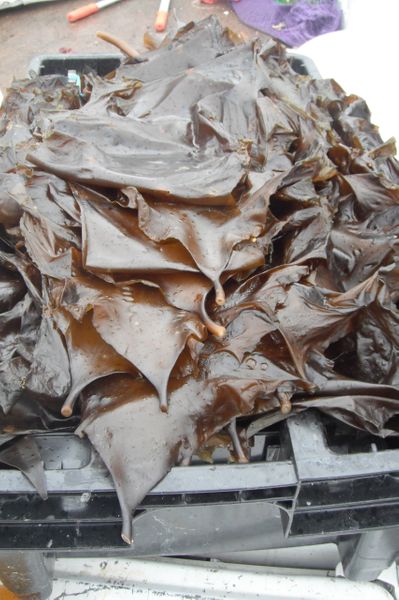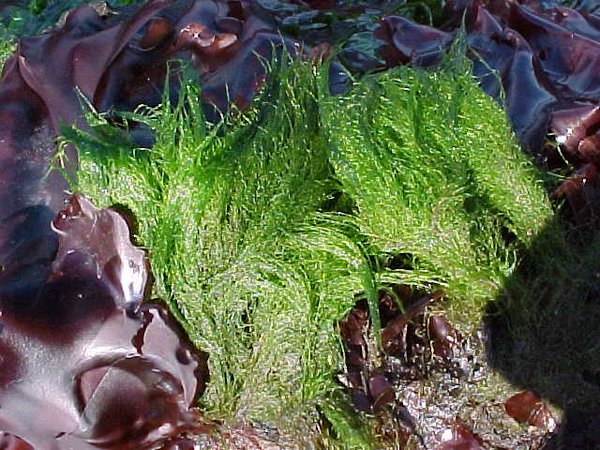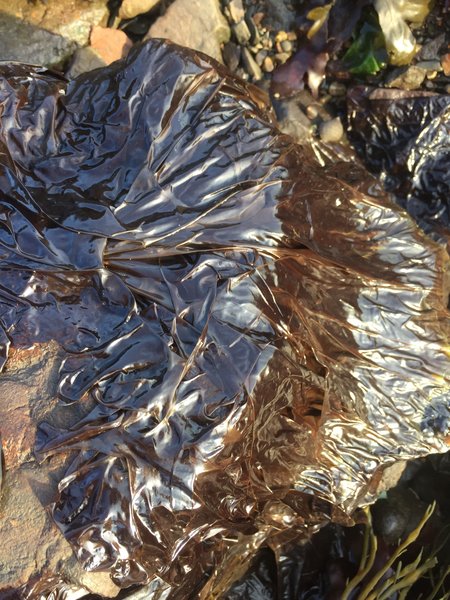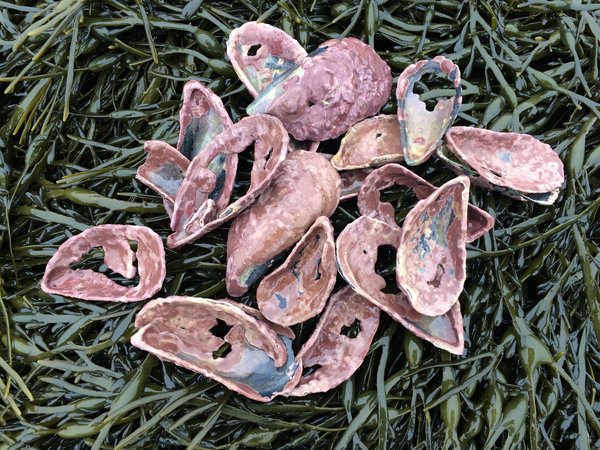 Image 1 of 2
Image 1 of 2

 Image 2 of 2
Image 2 of 2

Common or 'Sugar' Kelp (Laminaria saccharina), Wet, Live, Whole Leaf
*Overnight Express UPS Shipping is included in the price per pint volume*
This is a wet, live, science specimen
Common name: sugar or common kelp
Scientific name: Laminaria saccharina
Locations: low tide beds, rocky ledges, mooring balls, docks, floats, lines
Seasonality: available all year, but grows best in winter and spring
Colors: brown
Size: all sizes are available from 3" 'kelp-lets' to giant 12' monster plants
Collected: by hand
Quantity: sold by the plant(s) - large kelp or smaller kelplets
*Overnight Express UPS Shipping is included in the price per pint volume*
This is a wet, live, science specimen
Common name: sugar or common kelp
Scientific name: Laminaria saccharina
Locations: low tide beds, rocky ledges, mooring balls, docks, floats, lines
Seasonality: available all year, but grows best in winter and spring
Colors: brown
Size: all sizes are available from 3" 'kelp-lets' to giant 12' monster plants
Collected: by hand
Quantity: sold by the plant(s) - large kelp or smaller kelplets
*Overnight Express UPS Shipping is included in the price per pint volume*
This is a wet, live, science specimen
Common name: sugar or common kelp
Scientific name: Laminaria saccharina
Locations: low tide beds, rocky ledges, mooring balls, docks, floats, lines
Seasonality: available all year, but grows best in winter and spring
Colors: brown
Size: all sizes are available from 3" 'kelp-lets' to giant 12' monster plants
Collected: by hand
Quantity: sold by the plant(s) - large kelp or smaller kelplets

Shimmery, golden sugar kelp.
Tidepool Tim says, “Sugar kelp gets its name from the sweetish white powder that forms on the edges of a dried frond as it lies washed up on beaches in the summer sun. In the tidepools, kelp provides food and protection for lots of animals. Sea urchins love to munch on the fronds or stalk, even the holdfasts. Holdfasts themselves provide a microcosm of sea life including snails, Corallina, sea oak, sea grapes, scaleworms, bryozoa, & sponges. Periwinkle snails love to graze on the 'leaves' or long fronds licking their way up and down and leaving tiny trails like miniature "zambonis." Obelia hydroids cover the fronds during the summer and fall months as they complete their seasonal life cycles. Busy-backed nudibranchs, in turn, graze on the hydroids and bryozoans. A kelp bed is much like the large trees in the rain-forest. dozens of species depend on kelp for food and habitat. It supports a complete food chain.”
You Might Also Like









